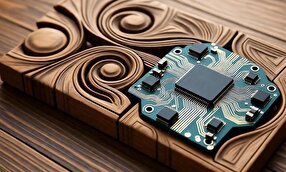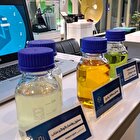Iranian Researchers Find New Algorithm to Reduce Analysis Time of Masonry Structures

A scientific article by Ali Nik-khou, a faculty member of the Department of Civil Engineering, and Ali Sa’adollah, a faculty member of the Department of Mechanical Engineering from the University of Science and Culture, in international collaboration with Farid Hejazi from the University of the West of England, was published in the prestigious International Journal of Civil Engineering.
The article, is titled ‘Reducing the Calculation Time in the Analysis of Stone Structures Using Nonlinear Topology Optimization Methods’.
In this research, a new method for reducing the time of analysis of masonry structures (like stone walls) is presented. Using a combination of advanced optimization and intelligent modeling methods, the researchers succeeded in decreasing the time required to perform calculations by an average of 30 to 46 percent while maintaining high accuracy. This method can be widely used in faster design and better evaluation of masonry structures, specially in situations where accurate and rapid analysis is required for engineering decision-making, like earthquakes or the reconstruction of historical monuments.
In a relevant development in December, a faculty member of Islamic Azad University succeeded in designing and implementing a type of environmentally-friendly concrete that reduces pollutants by 50% and is 30% cheaper compared to other samples.
“This type of cement reaches its ultimate strength much faster than Portland cement and inherently has much lower permeability than Portland cement in the early stages; however, calcium aluminate cement, despite its good qualities, has two very key shortcomings that have caused the use of this cement in by engineers to be very low,” Alireza Rasekhi, a faculty member of the Civil Engineering department of Islamic Azad University’s Qeshm branch, told ANA.
“The first problem with this cement is that after a while, a transformation phenomenon occurs in it, which causes a sudden decrease in strength and, as a result, durability in concrete made with calcium aluminate cement, which is a very big drawback and, in addition, it is many times more expensive than ordinary cement,” he added.
“The result of our research was the production of a mixed calcium aluminate cement, which has three key advantages over previous cements. First, its technical specifications and durability have been greatly improved. Second, it is about 30% cheaper than a similar sample, and third, it reduces environmental pollution by about 50%, making it a green or environmentally friendly product,” Rasekhi said.
4155/v





















